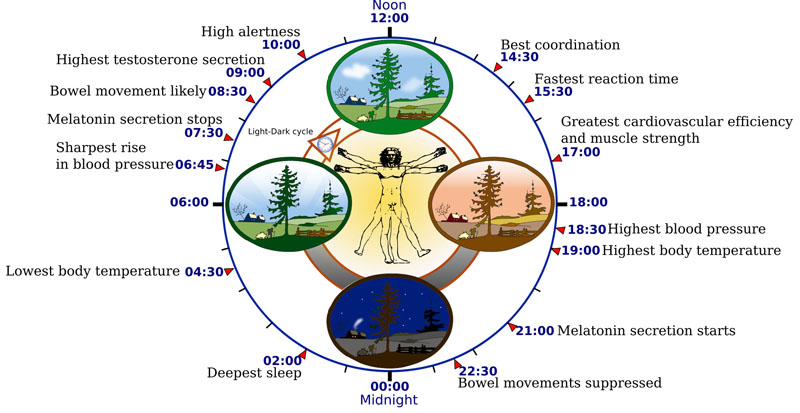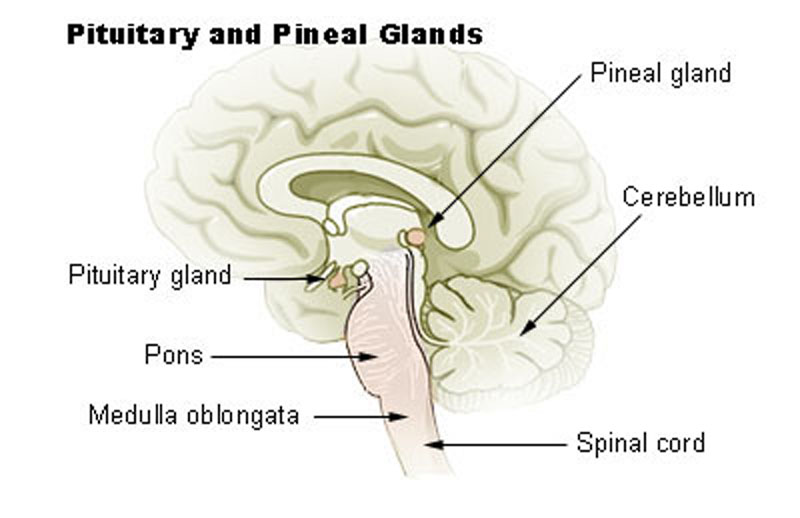Sleep
- A circadian rhythm is any biological process that displays an endogenous, entrainable oscillation of about 24 hours.
- The suprachiasmatic nucleus is a tiny region located in the hypothalamus, situated directly above the optic chiasm. It is responsible for controlling circadian rhythms.
- The pineal gland is a small endocrine gland in the vertebrate brain. It produces melatonin, a serotonin derived hormone, which affects the modulation of sleep patterns in both seasonal and circadian rhythms.
- The hormone, melatonin, is involved in the entrainment (synchronization) of the circadian rhythms of physiological functions including sleep timing, blood pressure regulation, seasonal reproduction and many others.
- In addition to melatonin, the amount of cortisol present in the blood undergoes diurnal variation; the level peaks in the early morning (approximately 8 a.m.) and reaches its lowest level at about midnight-4 a.m., or three to five hours after the onset of sleep.

Diagram illustrating the influence of dark-light rythms on circadian rythms and related physiology and behavior.
